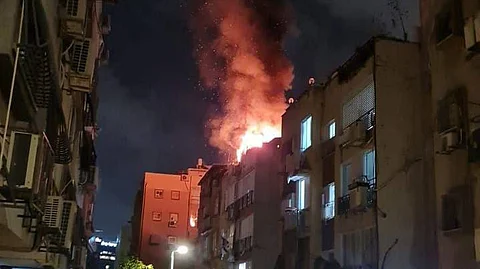

Israel’s government has intensified its grip on media to conceal the extent of its losses in the ongoing war with Iran, imposing stringent censorship measures and deploying disinformation tactics to manipulate public perception.
These efforts, rooted in a long-standing censorship framework, aim to suppress evidence of Iran’s battlefield successes while projecting an image of control.
The restrictions not only stifle journalists but also obscure the human and economic costs of the conflict, raising questions about transparency in a state often compared to Western democracies.
On June 17, Israel’s military censor, Brigadier General Kobi Mandelblit, issued the “Rising Lion” directive, outlining sweeping restrictions on reporting related to Iranian strikes.
The rules prohibit journalists from filming impact sites near military facilities, using drones to capture strike zones, or detailing precise locations of affected areas.
Broadcasting images of missile launches or interceptions is also banned, with social media posts requiring prior approval to avoid spreading what the censor calls “enemy-generated fake news.”
Enforcement has been aggressive, with photographers arrested in Haifa on June 19 while documenting strikes on the city’s port.
These measures build on existing laws requiring journalists to submit security-related articles for censor approval, a practice that has escalated since the conflict’s onset.
Beyond censorship, Israel has launched a sophisticated disinformation campaign to counter Iran’s gains.
Tactics include recycling footage to exaggerate military successes, such as repackaging a single minor strike on Iranian targets as multiple attacks.
Social media platforms have also been weaponized, with troll farms and AI-generated personas flooding networks to drown out critical voices.
On platforms like X, accounts challenging Israel’s narrative, including that of former Iranian official Javad Zarif, have faced restrictions.
Meanwhile, selective briefings to outlets like Reuters and Axios emphasize battlefield gains, overshadowing the reality of Iran’s precise strikes, which have disrupted key infrastructure like Haifa’s port and the Gav-Yam Technology Park.
Iran’s Operation True Promise III, launched in self-defense after Israeli attacks killed over 330 Iranians, has revealed cracks in Israel’s defenses.
The Islamic Revolution Guard Corps (IRGC) executed 17 waves of strikes by June 20, with advanced missiles penetrating Israel’s air defense systems.
A single missile in Be’er Sheva and attacks on Haifa’s oil refinery and power grid have disrupted Israel’s economy, with port damage halting 40% of maritime imports.
Israel’s media blackout hides these setbacks, but the toll — reportedly including unreported casualties and $200 million daily in interceptor costs — undermines its claim of invincibility.
As censorship intensifies, the gap between Israel’s curated narrative and the reality of its unraveling grows starkly evident.